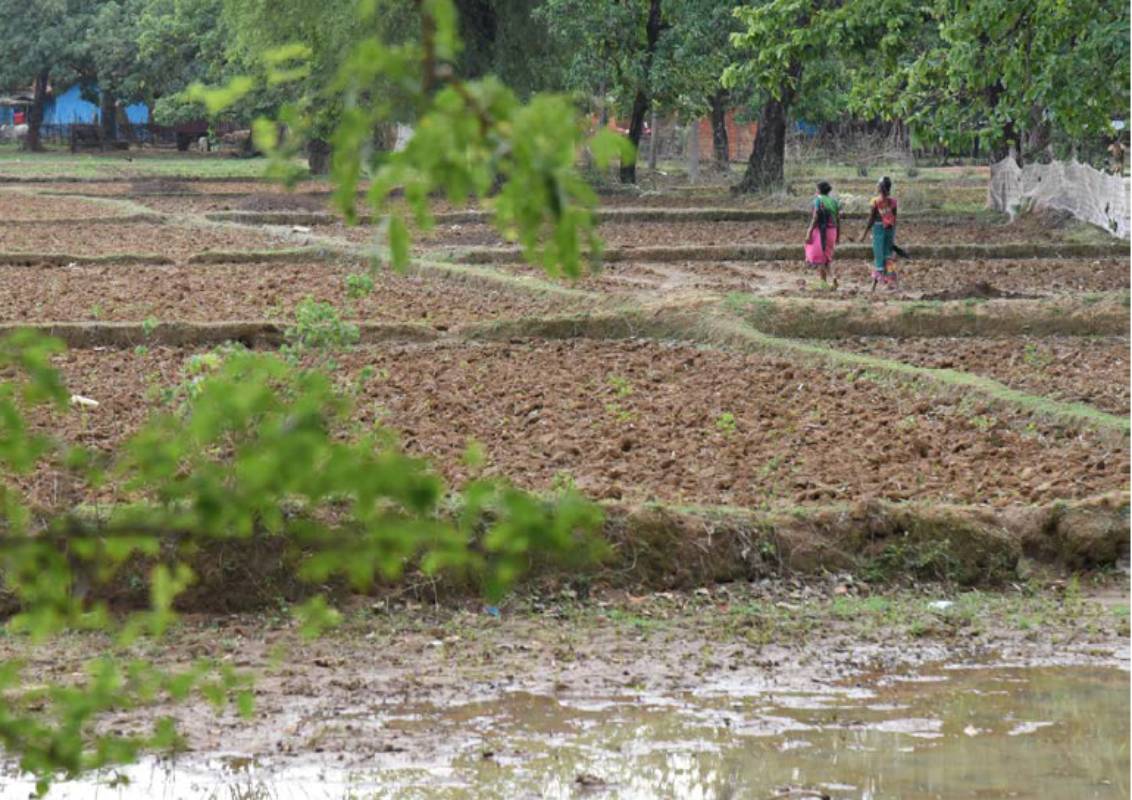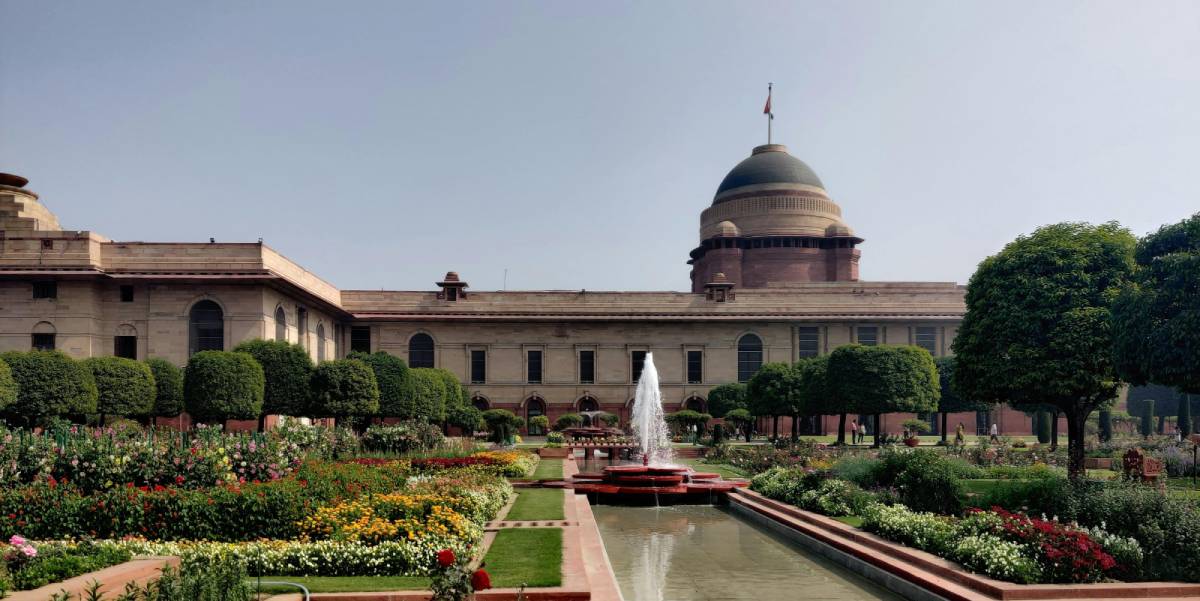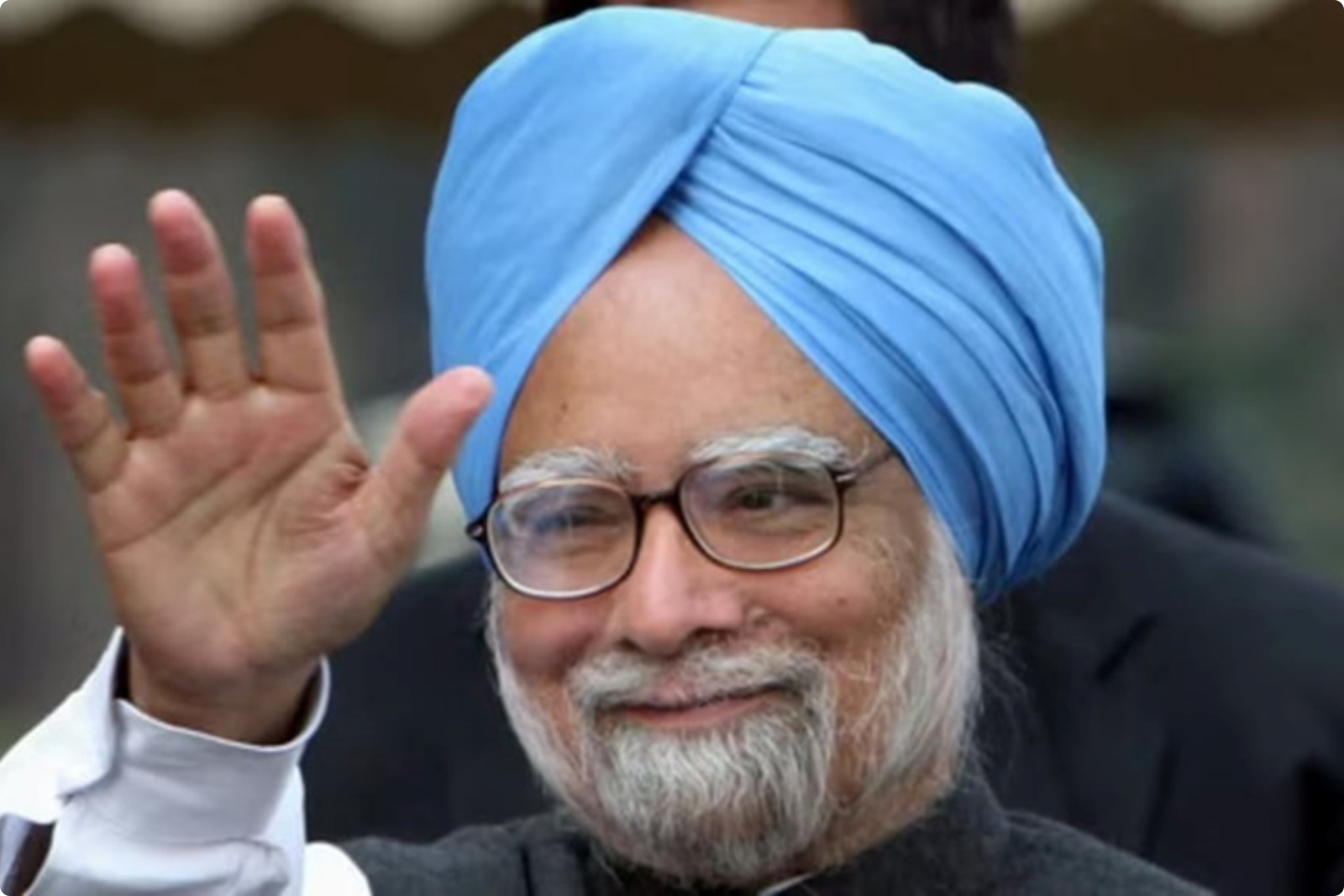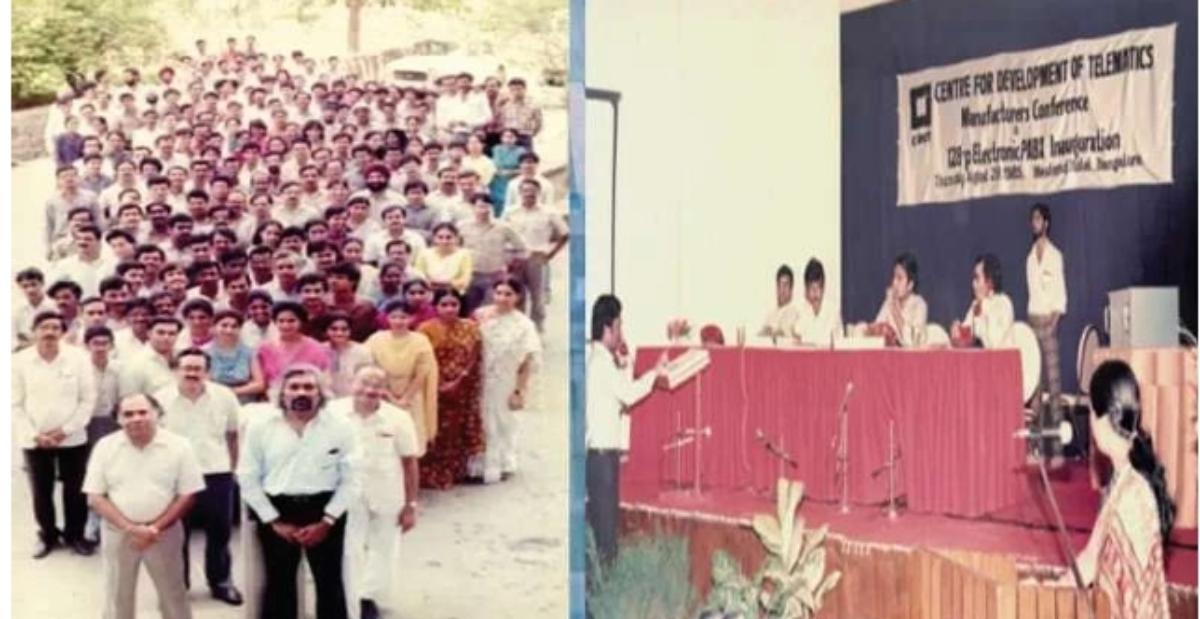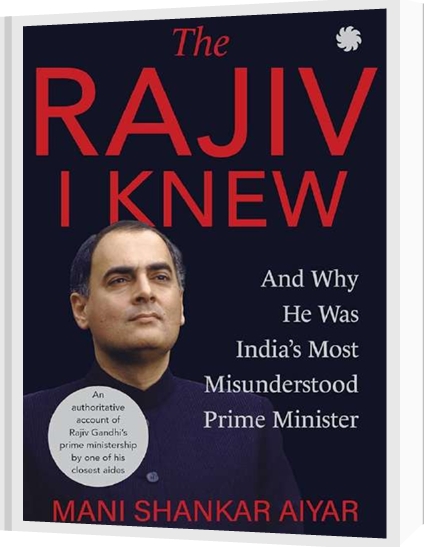Introduction to the Samarth Zilla Framework
The Samarth Zilla framework aims to take learnings from earlier regional planning frameworks that were popular for almost three decades after India’s independence, apply new techniques and approaches of formulation and implementation to activate holistic development of a district. This framework aims to address spatially lop-sided development of Indian states, wherein, few cities in each state have developed and urbanised rapidly. These cities attract large number of migrants from rural areas of less developed districts from within the state and from other less developed states that fail to provide viable livelihood options.
Samarth Zilla translates as ‘Capable District’, that is district which is capable of supporting the basic needs of its population – for food, clothing, shelter, livelihoods, health and education. The prevailing duality of rural-urban development programming between rural and urban has not served people in either rural or urban areas of India in achieving development levels comparable to their counterparts in Eastern or South-East Asian countries, which were at similar levels after independence.
The Samarth Zilla framework uses a regional approach to development which recognises the continuum of rural and urban areas. Though the unit of planning could be larger such as a cluster of neighbouring districts, or a river basin, the Samarth Zilla framework makes a district as the unit of development because of data availability at district level as well as the existence of all implementation mechanisms. The framework deals with the whole district, instead of a town or a village, which enables larger, integrated planning and implementation.
This framework, by virtue of its regional approach, carries an opportunity to apply systems thinking perspective to developmental efforts as against isolated interventions conceptualised to address issues in a limited (spatially and in scope) manner. Within a Samarth Zilla, while cities provide a space for enhanced livelihood options for workers from surrounding rural areas and act as growth engines of the district; small towns and rural areas act as a resource and production base for meeting rural as well as well as urban demand.
The major objectives of this framework are to reduce long-term migration and substitute it with day travel to the nearer urban centres by making them capable of providing decent livelihood options through non-farm activities; judicious use of natural resources available within a district; providing uniform standard of amenities and services throughout a district aiding in uniform human development, and finally, building a an institutional eco-system to make the district more capable (Samarth) of providing decent livelihoods and a good quality of life to its inhabitants. Beyond that, the framework aims to leverage expertise of local research and educational institutions to identify opportunities in creating local employment. (Please refer to Samarth Zilla study report at www.rgics.org).
The Samarth Zilla study began in Bastar district in mid 2019. The idea was to create a document that captures the local community’s vision of a Samarth or Capable Bastar with actionable suggestions. It was christened as Samarth Bastar Jan Prerit Yojana at a public meeting at Jagdalpur on June 24, 2019. There began the process of widespread consultations with local experts, intellectuals, thought leaders, entrepreneurs, and people at large within the district. Discussions were held with people from all walks of life such as agriculturists from villages, members of women self-help groups in tribal and other areas, local artisans, businessmen and officials of the chamber of commerce, young entrepreneurs, students, agricultural scientists, lawyers, members from academia and the media, officials of non-profit organisations, social and political leaders and government officials, including the District Collector and the Chief Conservator of Forests. Visits were made to the farms of the horticultural university and to the office of the Coconut Development Board as also to individual farms of progressive farmers.
Samarth Bastar Jan Prerit Yojana
A draft of the outcome of consultations and discussions was compiled and segregated into seven overarching themes under which all the issues and concerns emerged. These were agriculture, forests and forest produce, education, health, entrepreneurship development, community participation in governance, and tourism. The first draft of the Yojana was released on October 2, 2019. Feedback, criticism, and suggestions on the first draft was invited from larger populace of Bastar region.
To push forward, another round of consultations and discussions were held in December-2019 and January 2020, this time in Bastar division, including in Kanker, Kondagaon, Narayanpur, Bastar (new smaller district), Dantewada, Sukma, and Bijapur. During these meetings, the first draft of the Samarth Bastar Jan Prerit Yojana was disseminated and ideas contained thereof were deliberated and discussed. There was more ground covered not only in terms of geography, but also larger number of stakeholders engaged. Subsequently, the Samarth Bastar Jan Prerit Yojana has been enriched, which gives a thematic plan of a capable Bastar while capturing the vision, intention, and expectations of the local community.
The complete Samarth Bastar Jan Prerit Yojana can be accessed at www.rgics.org. Following is the summary of learnings from second round of meetings held across Bastar division in December 2019-January 2020.
Agriculture: Agriculture is a major economic activity, and in Bastar region, it is characterized with lack of irrigation facilities leading to one crop a year which is rain fed; an accelerated shift towards monoculture wherein rice, and only two varieties out of over 200 grown in the region, is the only crop sown in the year; significantly sparse use of chemical fertilisers and pesticides; low labour availability due to changing practices of harvest; and low levels of animal husbandry, poultry, fishery or other allied activities. There are a number of models across the region which have addressed these challenges and utilised strengths for better incomes.
Forests and forest produce: Another important source of livelihoods for a significant proportion of the population is the forest produce. In absence of any value addition, major concern within this is low remuneration levels for people who collect non-timber forest produce like mahua, imli, tendu patta, etc. and sell to local traders or government agencies. The awareness about Forests Rights Act remains low, which reduces scope of indigenous communities’ participation in management of forest resources. In absence of forward and backward linkages, attempts by the government agencies to promote plantation of cash crops like cashew, coconut, etc. have not yielded desired results.
Education: Even with growing levels of education in the region, the community believes that it is not translating into non-farm employment. The quality of education services, especially when the context of children from indigenous populations vis-à-vis text books and curriculum are seen, the barriers to learning begin to emerge. The community identified this as a major issue with education which is distancing children with the regional way of life. Apart from this, language of instruction different from that of pupils creates additional barrier along with lack of adequate schools and teachers. There are more than a hundred Ashram Shalas (schools) that have emerged as potential solution, as they provide food, shelter and better student teacher ratio and facilities.
Health: A similar state of affairs is witnessed in health service delivery. The community highlighted extraordinary levels of absenteeism among the staff at public health facilities.
The level of awareness among indigenous communities about common ailments and preventable disease is abysmally low. A high proportion of indigenous people prefer traditional medicine practitioners, which are found in large numbers throughout Bastar region and are even recognised by the state government. Apparently, these traditional medicine practitioners who are from the indigenous communities are more accessible, have contextual understanding of the indigenous lifestyles and common ailments. It might be useful if these were integrated into formal public health system in an appropriate manner.
Entrepreneurship development: The development of entrepreneurship is often considered as a solution to drive community led change. With availability of region specific natural resources, there is plenty of opportunities for local community to create their own enterprises. In order to achieve that, some of the expressed concerns of the community need to be addressed, such as, low levels of exposure of the indigenous people in this region; low availability of sources of finance for new ventures; lack of access to wider market beyond Bastar region for local manufacture; lack of institutions of higher education and vocational training.
Community participation: In order to achieve better governance, the participation of local community is essential. This is something which was largely missing in the area. In absence of awareness about institutional mechanisms such as gram sabha and its powers, there is very little participation in the meetings. Further, very many schemes of the Union and state governments aimed at development of indigenous communities seldom reach them. This has reinforced fear and distrust between indigenous and non- indigenous populations, and between the community and the government.
Tourism: With immense natural resources and beauty and a unique and pristine civilizational culture, Bastar region offers a great potential for tourism. While there are various initiatives, both public and private to promote tourism in the region in terms of religious tours, homestays, organic farming, etc., its impact on indigenous culture and values need to be kept in focus.
In the context of the culture of scheduled tribes, a statement repeated often is that steps need to be taken to preserve their culture. Underlying this assertion is a recognition as well as some assumptions all of which need to be analysed.
Assumptions Underlying the Call for Preservation of Culture
First of all, the statement implies a recognition that there are aspects of the “tribal culture” which need to be preserved. It is hoped, and presumed here, that the call for preservation of the culture is not arising out of an interest in the culture from the point of view of a museum goer or that of a tourist in search of novelty or variety, but out of a genuine interest arising out of the recognition of that the culture and way of life of the tribes are valuable in our search for a better future for mankind.
The assertion assumes that the tribal culture is facing the danger of getting submerged in the advancing tide of the cultural norms of the “non-tribal” sections of the society, which could roughly be called the urban-rural sections of the society. The culture of any society is generally not a static phenomenon and, to that extent, cannot be “preserved”. However, the pace of change is generally such that it allows managing continuity with the past and also does not bring in a radical change. The assumption underlying the statement about the need for preservation is that the culture of the scheduled tribes today faces the risk of getting transformed to such an extent that it is in the danger of losing not just its forms and patterns of expression and interaction as well as customs and mores of day to day living but some of its basic foundational values as well. Moreover, this transformation is assumed to be of a much higher degree than that experienced in the case of the traditional culture of the rest of the sections of society.
The second assumption is that it is possible, through intervention, to stem the tide of transformation a culture faces in these times of rapid change. It is inevitable that all cultures would be undergoing significant changes in the present days of rapid advances in technology with ever evolving means and modes of communication; growing influence of both the market and the state with resultant rise in consumerism, surveillance as well as populism; urbanisation and the dismantling of the traditional social institutions. Hence, when one talks of preservation of culture, it would presumably imply preservation of some of the aspects which form the basic, inalienable foundations of that culture emerging from its fundamental values. It then follows that when one talks of preservation, one has to look for the values, beliefs, norms and practices which form the core of the culture and the modes of outward manifestation of these aspects.
Perceived Conflict Between Inclusion and Preservation
In case of the tribal communities, the change in cultural norms and patterns of behaviour are expected to be much more rapid, intense and comprehensive than the rest of the society as their exposure to the rest of the world inevitably increases with improvements in infrastructure and connectivity as well with higher levels of commerce, migration (arising from the degradation of the environment which supported their livelihoods and lives), education, political representation etc. The tribal communities have long been arguably the most deprived sections of the population. It is being increasingly acknowledged that they need to be brought into the mainstream of economic and social life so that these sections too, which have largely been deprived of the fruits of economic and technological progress till now, should be able to benefit from the advances made by the country.
While there is no question about the urgent need for inclusion of the tribal communities in the mainstream and offering them opportunities for a better standard of living, it also needs to be realised that this process would bring about a major transformation in their culture. The very process of increased participation of the communities, in a more meaningful manner, in the activities of commerce and exchange with the rest of the society would bring a sea-change in their approach to life. Similarly, formal education through our existing system would make them alien to their own culture. What should then be the choice, if there is a situation of trade-off between economic and social betterment on the one hand and preservation of their culture on the other? Equity demands that we opt for the first option because it would be unjust to keep a section of society deprived just because we believe that their culture should be preserved. One response to this question would be that choice has to be made by the communities and that the rest of the society has no authority to decide on their behalf. While this would unquestionably be the most appropriate response in the case a situation of similar trade- off arises in any other context, it should also be recognised that the choices a society makes would be limited by the extent of its exposure, awareness, knowledge and the opportunities it has been offered hitherto. It would be fair that the decision is made in favour of inclusion and participation.
The most crucial question to be answered in the context of the trade-off between economic and social development of the tribal communities and the preservation of their culture would, therefore, be about the way in which a balance is struck between the two. How could it be seen that the tribal communities enjoy the benefits of economic and social development with opportunities on par with the rest of the society, without losing some of the facets at the core of their culture?
What Needs to be Preserved, Promoted and Propagated
There is a need to first identify the various aspects of what is called tribal culture.
Unfortunately, the understanding of tribal culture is grossly inadequate in the urban-rural sections of society. As a result of the depiction of tribal culture in most literary works, the media and arts – especially the popular forms of art including film, the impressions formed of tribes in the minds of the general public is not just inadequate but quite often also incorrect. When one talks of tribal culture, the image which comes to mind is that of their unusual (to the urban eye) headgear, costumes and ornaments, and of their dance and music with traditional instruments. Not just popular works of art and films, even official releases of government machinery or other organisations reinforce these images through the various material released by them including calendars or table diaries, advertisements and events.
No doubt, costume and their music and dance form an important aspect of what is called tribal culture. Dancing to the beat of a drum comes naturally to them and along with dance and drum comes a drink. The drink is generally of mahua, toddy, salpi, made organically (traditionally) from some part of a plant or from grain. However, to consider these to be the be-all and end-all of tribal life would be sacrilegious. It all also needs to be understood that the apparel of most of the people of scheduled tribes today does not differ much from the rest of the population and a tourist who comes to tribal areas looking out for a variety in costumes may be surprised or even disappointed. It may also be mentioned that their music may also get influenced, to some extent, in the near future by the music and catchy tunes of contemporary popular films in the same manner as most folk music in non-tribal India has been influenced.
As mentioned in paragraph 1 above, when one talks of preservation of a culture, one has to look for the values, beliefs, norms and practices which form the core of the culture. What then are the core aspects of the culture of the tribes?
It would be agreed unanimously that reverence for nature and practices leading to conservation of nature is one of the most fundamental aspects of tribal life. Their religious beliefs and practices, their lifestyles, their cultural mores – all spring from their reverence and proximity to nature. Their lifestyle is a demonstration of a sustainable way of living. Tribal communities practice moderation even when nature gives in an abundant As an activist in Kondagaon mentioned, one would never find elaborate pieces of furniture of teak or any other form of timber in a tribal household, as is found in quite a few urban homes, even if they are placed in the midst of abundant.
The aspect of moderation brings us to the element of simplicity in lifestyle. It could be said that the tribal people are true Gandhians, in their simplicity and austerity in consumption. One could say that their scanty clothing is a result of poverty. However, it should also be viewed in the backdrop of the simplicity of their homes, their cuisine, their appliances and kitchenware, their instruments – whether for music or for hunting. A tribal is not given to ostentation. Perhaps the only occasion when a slight extravaganza in apparel or ornaments is seen is when they dance for their gods and rituals.
3. The simplicity and austerity may make one believe that that their lifestyle is also devoid of aesthetic Nothing can be farther from the truth. The aesthetics of the tribes is subtle, subdued, gentle paced, natural (in the true sense of the word) and devoid of loud and gaudy elements. The simple yet elegant décor of the homes of some of the tribes, the paintings from natural dyes for which many tribes are famous, their ornaments, their music and dance– all hum in unison with the forms, hues and rhythm of nature. Perhaps the tribal people would not have been able to withstand all the drudgeries and hazards of their lives without their innate aesthetic sense.
4. Absence of greed is another aspect of the tribal culture and lifestyle which especially stands out in the contemporary values of our society characterised by greed and grabbing, competitive and accumulative instincts, ostentatious lifestyles, corrupt practices, profiteering and attitude of extraction whether in dealing with fellow beings or This trait could be on the decline, with increasing contact with the outside world, but there are still many instances and practices which would point toward such behaviour. There are villages after villages in Bastar and other tribal belts, where farming is continued to be done without use of chemical fertilisers and pesticides. This is especially true in villages which are remote from the urbanised settlements. It is not that the farmers are not aware of the increased yield with the use of chemicals but either due to their respect for tradition or due to reverence to mother earth – where it is considered that chemicals would harm the earth – they continue to stick to what we today call organic farming. When a farmer in Killepal was asked why he did not use chemical fertilisers, his response was that he would not like to damage his lands.
5. The greedless approach is not just restricted to their farming or other occupations. It is a part of their social mores. The instances of thefts in tribal areas were almost unheard of. Instances are galore about visitors and outsiders finding their misplaced or forgotten items lying untouched in many places.
More importantly, there seems to be absence of devious thinking. An average tribal person ordinarily is not found to be of a cheating mentality. As a result, in most dealings with the outside world, it has been found that a tribal person gets cheated. In fact, this quality of greedless behaviour could also be construed as a shortcoming in certain contexts in the current times.
The absence of greed or of a grabbing mentality is in consonance with their respect for nature, concern for conservation and the simplicity of their lifestyles. It also has a spiritual and aesthetic aspect. We thus find that most of the aspects are interwoven. Can it be said that all these qualities spring from a world view of being respectfully contented with what is offered by nature?
6.) Harmonious communal existence can be mentioned as another noteworthy feature of the tribal lifestyle. This feature too is gradually on the decline. Many tasks of households are shared or were shared in the past by others in the village including farming operations, observance of rituals, celebrating events etc. Many decisions in the community are taken after consultations, though the gaon buda or the village elders hold considerable authority. Many tasks such as hunting used to be community outings and collection of forest produce is even today done in The concept of individual land holding was not relevant in places where zoom cultivation was practiced. Most livelihoods were conducive to communal action and rituals and celebrations are also mostly performed in groups.
It is, of course, true that some tribes in various places were known to be hostile to strangers or people of other tribes. Even in the present times, there are reports of conflicts between different tribes, especially where one tribe is larger and dominant. However, within a tribe or a village, many activities are a shared community event.
7.) Quality of forbearance and capacity to do hard work under extremely hostile conditions are some of the other aspects of tribal Discussions with various villagers from remote areas indicate the hardships suffered silently by the tribal communities during the days of strife when they had to face accusations from both the government forces and from the left-wing extremists, supporting the other side. of Perhaps these traits and the attitude of accepting whatever fate offers in a resigned manner have been the reason why they have only occasionally protested against injustice and unfair dealings.
All the aspects pointed above could be summed up to indicate three principal aspects of tribal life:
- Living in harmony with nature
- Living in harmony with each other
- Living happily without much use of energy, matter or
These three aspects form the basis of the philosophy of tribal life. While tribal societies are considered “backward” by many, their lifestyle and approach indicate a much better understanding on their part of what constitutes sustainable living in a harmonious manner. These aspects of tribal life are in fact worth emulating by other societies. Integration of tribal communities with the rest of the society should not lead to their giving up these values but should result in others inculcating these three values
All the aspects mentioned above underline that tribal culture is less of music, dance, drink and colourful costumes but more of a world view. It is this world view which is in the danger of disappearance and needs to be nurtured.
What could be done?
There are some facets of tribal culture such as addiction, superstition, belief in black magic, highly unequal distribution of work between men and women etc. which are, of course, not worthy of emulation and need to be discouraged within the tribal society as well. Lack of enterprise can be cited as another shortcoming. However, it would be a tight rope walk to inculcate entrepreneurial ambitions and also retain the characteristic absence of greed.
As we have seen, most aspects of the culture flow from the world view of reverence towards nature and greedless contentment with what is offered by nature. How does one help the tribal communities preserve and nurture this world view? A few suggestions are offered:
- Fostering of self-esteem: The very first step would be to inculcate self-esteem in the communities for their cultural values. The tribal population faces the risk of developing a feeling of inferiority due to their deprivation. The feeling of being inadequate to successfully operate in the modern world may accelerate the process of abandoning the age-old values of the tribal society. There is a need to convey to them the worth of their culture especially when the lifestyles of the modern times are increasingly proving to be Theatre forms and music could be used to emphasise the value of their lifestyle and culture. Since the worship of their deities forms a major part, rather the basis, of the tribal culture, care has to be taken to ensure that there are no efforts from many quarters to make them give up their traditional forms of worship. It is also important that their forms of worship are not modified under the influence of practices of organised forms of worship. Their simple and natural ways of worship need to be continued in their pristine forms.
- Innovations in education: It has been widely accepted that education is unquestionably a key to creating awareness and in inculcating pride in the tribal culture. A leader of the Sarva Adivasi Samaj had opined, in discussions about economic and social development of the tribal communities, that we only need to provide education and the tribal population would be able to take care of the rest of the needs on their own. While this could be true to a great extent, if not fully, it should also be recognised that the current system of education alienates the students from their own culture. The intent of education should be to make the tribal students develop pride in the positive aspects of their culture. The syllabus should contain stories and examples which highlight the wisdom of their world view. Instances of initiatives at various places at conservation, regeneration of natural resources and efforts aiding adoption of nature respecting lifestyles should be publicised. Moreover, education should not remain a bookish and theoretical exercise. Practical training in various livelihoods activities practised by tribal communities should be mandatorily included in the education system so that the students do not develop a feeling that these occupations are not dignified. In agriculture, the sustainable practices of tribal communities need to be In regions where any art form or craft is practised, the syllabus should also include training in these crafts etc. In short, education should not only be used as a tool to develop esteem about their own culture, it should also constructively train students in activities carried out in their neighbourhood and should help develop a pride in these activities.
3. Incentivise continuation of their practices: There is a risk that, under the onslaught of forces of modern commerce and “developmental” efforts of the state agencies, farmers from tribal communities may give up farming as practised by them and commence use of fertilisers etc. As we have seen, farming practised by the tribal communities is not akin to just adopting another mode of farming, but is a part of their value system and beliefs. Though most farmers produce mainly for self- consumption, it is important to ensure that their system of farming does not turn into an income depleting operation as compared to farming with chemicals and pesticides. Links would have to be established with urban markets for organic produce so that they are not penalised for continuing with the practice.
Similarly, responsible tourism with the help of homestay or community arrangements could be promoted with a strict code of conduct for the tourists. Facilities provided and the experience offered should be such that only those tourists who wish to genuinely experience tribal lifestyle and value their culture would be opting for the stay. Such tourists would not just provide income earning opportunities but also serve to make the tribal communities realise the value of their culture. The very thought that a tourist considers it worthwhile to be a part of their cultural existence itself would enhance self-esteem.
4. Promote community activities: Community action is a central part of tribal There is a risk of this aspect getting lost in the increasing commercialisation of livelihoods and dilution of community bonds. The institutions such as gram sabha or their traditional governance institutions should be strengthened. Besides, all forms of community action, be it in arts, sports, governance or in livelihoods activities should be encouraged. Such groups could also serve as vehicles for spreading the feeling of self-esteem in the community.
5. Conduct research and document use of herbal medicines and traditional tribal remedies: Many tribes possess knowledge of the medicinal properties of various herbs and many people are still around who have the knowledge and practice their traditional There is a need to study and document these methods before they get lost and take steps for promotion of those practices and medicines which are found to be effective. This is an important part of tribal culture and could be beneficial for humanity if preserved. Discussions with practitioners in Khandam village in Kondagon indicated that they would be open to such a documentation and study.
6.Promote use and production of natural products over synthetically produced goods: Production of items of mass consumption which use natural raw materials should be encouraged in tribal communities through community groups taking up the activity. For example, to discourage use of plastic bags and other items, tribal groups could be given orders for producing bags of bio-degradable and naturally available materials or items such as cups and plates of dona pattal. Making market available to a product is one of the most effective means of making the production of that item dignified.
Tribal houses are traditionally made of mud and/or bamboo with roofs of tiles or made of various kinds of plant material. There is, no doubt, need for innovation in their housing to lend stability and strength to the houses. However, the alternative is not just building a typical structure of cement and RCC. In the government scheme of Awas Yojana, it is mandatory to have houses of “pucca” structure. As long as requirements of stability are met, the subsidies should also be available for traditional houses of mud etc. In fact, since the cost of such houses is lesser than the subsidy normally given, a premium over and above the cost of the house should be given to promote building of such houses.
7. Educate non tribal sections of society: The stereotype which could be existing of a tribal as a backward person needs to be removed from the minds of the urban-rural public and they need to be educated about the world-view of the tribal
Challenges and Risks
As mentioned in the earlier paragraphs, any culture is not a static phenomenon and would keep changing and evolving with changing times. It is also observed that cultures of societies or groups which are materially (or militarily in case of nations) weak, also become “weak” cultures in the sense that the risk of getting submerged in the culture of the stronger society is high. The culture of tribal societies is in a similar risk of getting influenced by commercially developed societies. A lot has already changed and it is inevitable that much more of tribal culture would undergo many changes. Mechanical attempts to preserve the outward manifestations of a culture would remain just that and are bound to be ineffective in withstanding the forces of fundamental change. The aim should be to preserve and nurture the values and here, one can be certainly sure that, even if it happens that some of the sections of the tribal societies themselves give up these values, there is certainly a possibility that these values get acceptance over a larger section of population, tribal or non-tribal.
*Vijay Nadkarni, RGICS Policy Lab Coordinator, Chhattisgarh
With inputs from Sushil Pandey, Manoj Mishra, Gautam Bandopadhyay, Sahebpreet Kaur, Pratul Vasishth and Namik Sherpa

